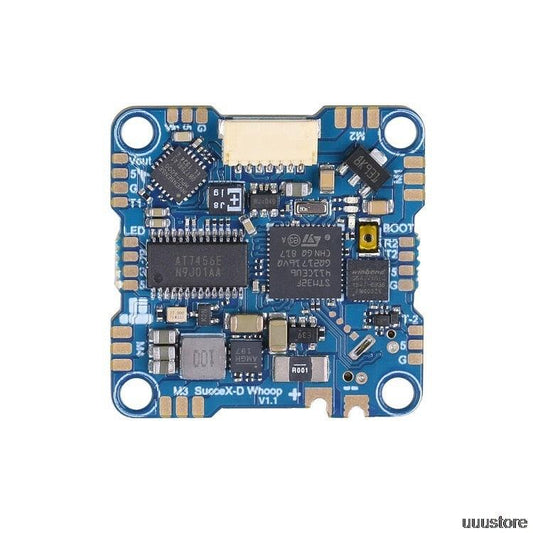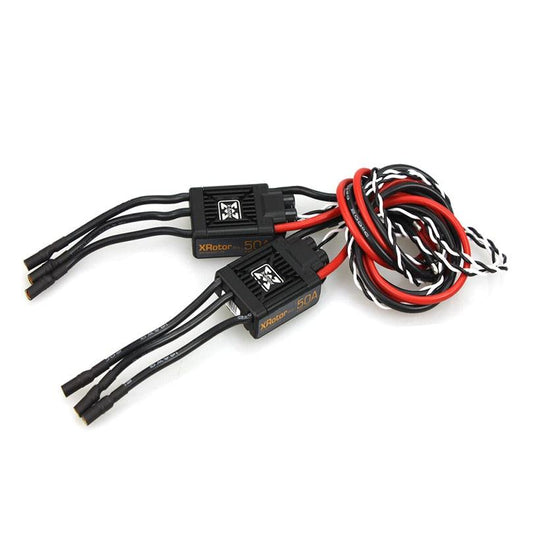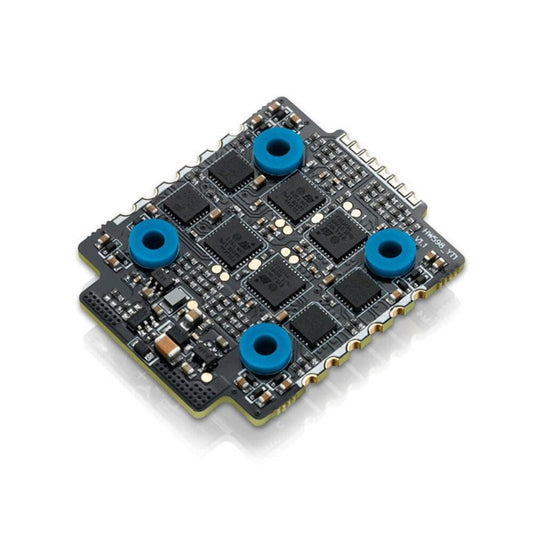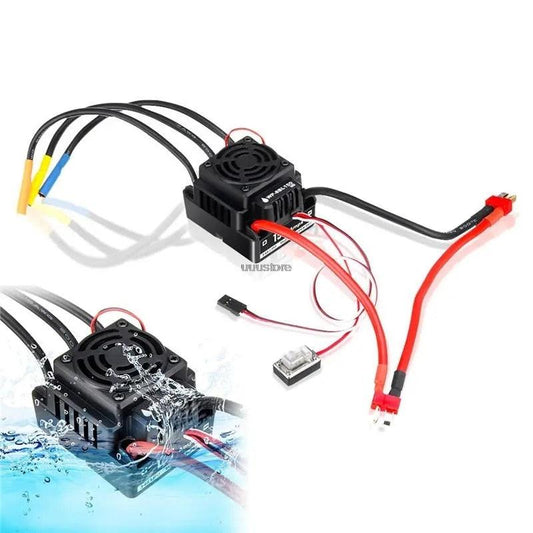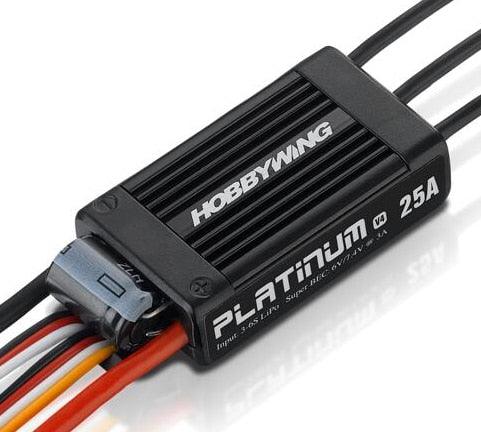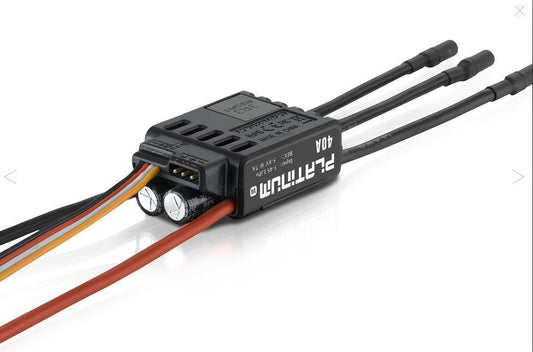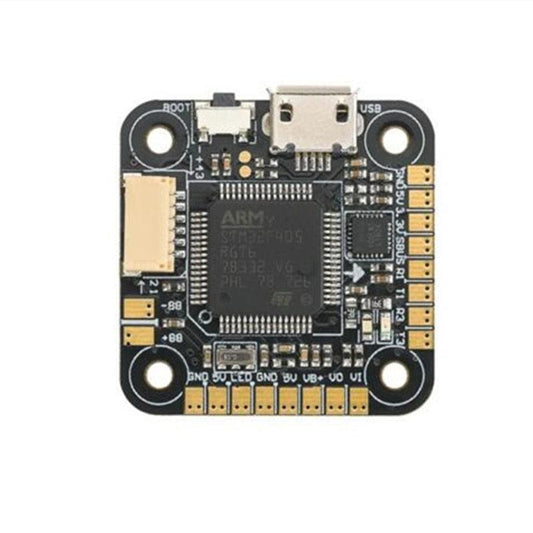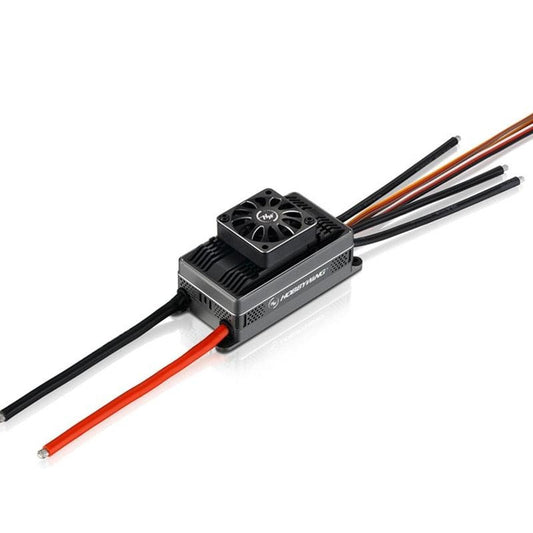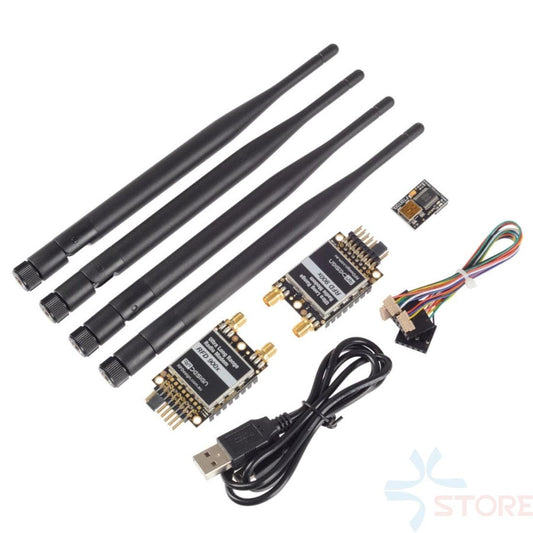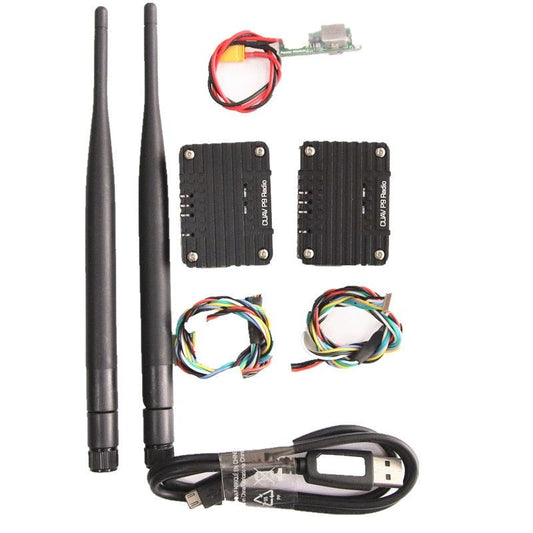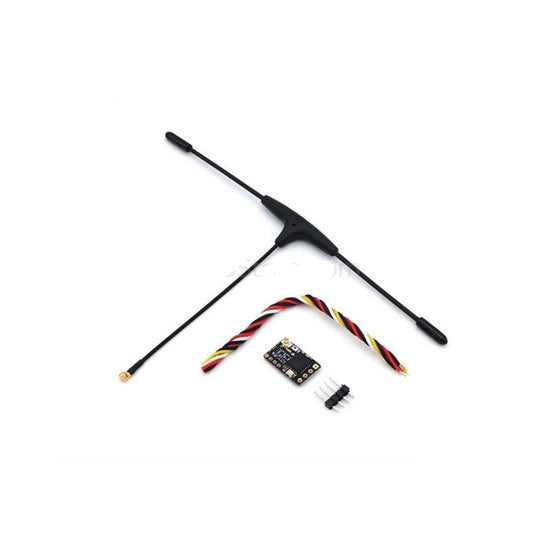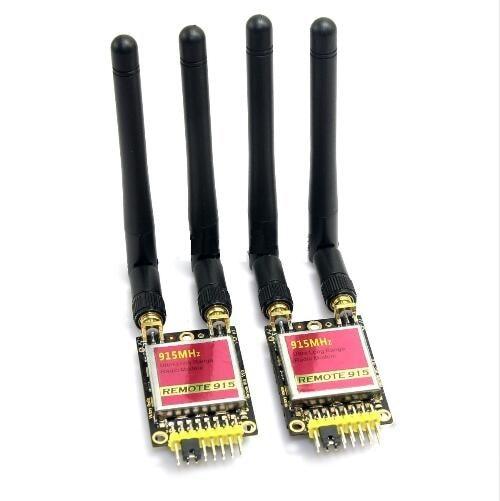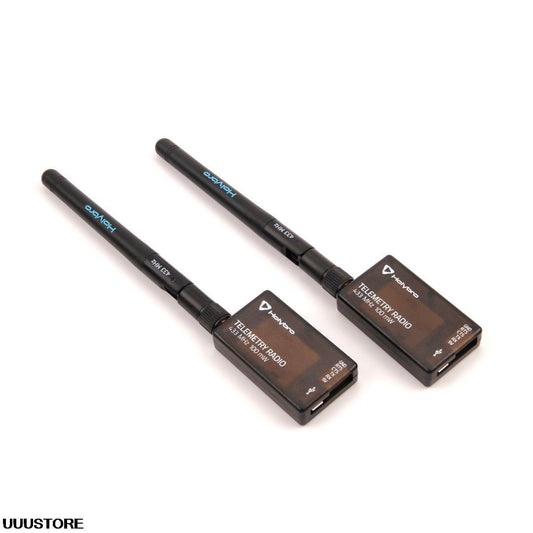-
IFlight SucceX-D Whoop F4 AIO Flight Controller - 20A ESC STM32F411 MPU6000 2-5S BLHeli-S Support DJI For FPV Racing Drone DIY TOY
Regular price $95.64 USDRegular priceUnit price per -
2pcs Hobbywing XRotor Pro 50A ESC - 4-6S Brushless speed controller ESC Multi-Rotor Aircaft DIY For RC Drone Helicopter
Regular price From $80.34 USDRegular priceUnit price per -
Hobbywing XRotor Micro 40A ESC - 20x20mm Hobbywing XRotor Micro 40A 3S-6S BLheli_32 Dshot1200 Ready 4in1 Brushless ESC for RC Drone FPV Racing freestyle
Regular price From $94.28 USDRegular priceUnit price per -
EMAX BLHeli-S DSHOT Bullet ESC - Original New 6A 12A 15A 20A 30A 35A BLHeli s Speed Controller For RC FPV drone motor
Regular price From $26.13 USDRegular priceUnit price per -
SUNNYSKY EOLO 40A Pro ESC - 6-14S IP67 Electronic Speed Controller supports motor including but not limited to 7205 7206 7210 8108 8110 8112 8114 for RC drone
Regular price $152.17 USDRegular priceUnit price per -
CUAV New CAN PDB Carrier Board - Pixhawk Pixhack Px4 PIX utopilot Flight Controller RC Drone Helicopter Drop Ship Whole Sale
Regular price From $285.24 USDRegular priceUnit price per -
DIATONE MAMBA F45_128K BL32 ESC - 4IN1 45A ESC 6S Dshot1200 Electronic Speed Controller for RC FPV Racing Drone
Regular price $71.74 USDRegular priceUnit price per -
Feiyu feiyutech Panda FY-41AP airspeed sensor rc autopilot for fix-wing drone
Regular price $62.93 USDRegular priceUnit price per -
HobbyWing QuicRun WP-8BL150 ESC - Black 1/8 Brushless WaterProof 150A Electronic Speed Controller Use 3-6S Lipo Double T / XT60 Connector For RC Drone Airplane Cars
Regular price From $118.32 USDRegular priceUnit price per -
Hobbywing Platinum 25A V4 ESC- Brushless Electronic Speed controller for RC Fix-wing Drone Heli FPV Multi-Rotor
Regular price $53.13 USDRegular priceUnit price per -
Arkbird OSD Autopilot System - w/OSD V3.1020 (GPS/Altitude Hold/Auto-Level) FPV model's navigation for FPV Airplane UAV Drone
Regular price $228.55 USDRegular priceUnit price per -
Arkbird Nano Autopilot Flight Control - Extreme Small Volume 15.2g OSD ATT for RC Racing Drones Mini FPV Aircrafts
Regular price From $122.89 USDRegular priceUnit price per -
Hobbywing Platinum 40A V4 ESC - Brushless Electronic Speed controller for RC Helicopter Fix-wing Drone FPV Multi-Rotor Drone
Regular price $63.25 USDRegular priceUnit price per -
HGLRC Zeus F728 - 20x20mm STACK 3-6S F722 HGLRCF722 Flight Controller 28A BL_S 4in1 ESC Support I2C function For RC Racing drone
Regular price $100.96 USDRegular priceUnit price per -
Cuav Can Pmu - Digital high-precision power detection module UAV power management module RC drone accessories
Regular price $131.25 USDRegular priceUnit price per -
Hobbywing Nano F4 With OSD - New Hobbywing XRotor Nano F4 Flight Controller for RC FPV Quadcopoter Drone
Regular price $63.36 USDRegular priceUnit price per -
Hobbywing Platinum HV 200A V4.1 ESC - 6-14S Lipo SBEC / OPTO Brushless ESC for RC FPV Drone Quadrocopter Helicopter Aircraft
Regular price From $555.86 USDRegular priceUnit price per -
CUAV New X7 PRO Core Flight Controller Carried Board for FPV Drone Quadcopter Helicopter Pixhawk RC Parts
Regular price $1,389.57 USDRegular priceUnit price per -
RFD900X Telemetry Radio Modem - With Hex upgrade orange cube Pixhawk2 Flight Control autopilot Here 3 CAN GNSS GPS module for fixed-wing drone
Regular price $1,426.76 USDRegular priceUnit price per -
FeiyuTech 51AP FY-51AP - Flight Controller For FixWing Skywalker aerial photography Uav Fpv Rc model Drone Plane Replace 41AP
Regular price $305.75 USDRegular priceUnit price per -
CUAV P9 - 900MHZ Radio Telemetry Wireless Transmission Module Pix for FPV Data Transmission Station Pixhack Pixhawk Long Range System for Drone
Regular price From $466.09 USDRegular priceUnit price per -
Cuav C-RTK 9P - high precision UBX ZED-F9P multi-star multi-frequency GPS low power locator drone mobile terminal base station
Regular price From $886.78 USDRegular priceUnit price per -
120KM Long Range System for Drone - RMILEC T4047NB20 NB20 V3 20 Channel 5W 433Mhz UHF System w/Receiver for JR/Futaba Radios
Regular price $671.16 USDRegular priceUnit price per -
MFD AAT Antenna Tracker - MFD MyFlyDream v5.0 version 12CH Automatic Antenna Tracker (AAT) FPV System MFD Innovation Long Range System of Drone
Regular price $465.96 USDRegular priceUnit price per -
T21 FPV Portable Ground Station - 30KM All-in-one Handheld 8 inch IPS Dual integrated link P900 900MHZ remote control system Long Range System of Drone
Regular price $3,171.17 USDRegular priceUnit price per -
MFD Myflydream Crosshair AP - Crosshair AutoPilot flight controller new AP support Osd CAN-BUS AND TF Long Range System for RC Airplane Aircraft Drone
Regular price $254.46 USDRegular priceUnit price per -
BlackSheep TBS Crossfire Nano / Crossfire Nano SE Receiver - Immortal T Antenna CRSF 915/868Mhz Long Range UHF Radio System for FPV Drone Airplane Helicopter
Regular price From $30.33 USDRegular priceUnit price per -
MyFlyDream MFDLink Rlink Receiver - 433Mhz 8 Channel Remote Control Extended Long Range UHF RX Receiver for FPV Drone
Regular price $83.42 USDRegular priceUnit price per -
RDF900 Data Diversity Telemetry - 915Mhz Radio Modem Remote 900 Data Diversity Telemetry for APM Pixhawk Flight Controller 40KM Long Range System for Drone
Regular price From $119.01 USDRegular priceUnit price per -
AKK FX2 Ultimate Transmitter - Mini 5.8GHz 40CH 25mW/200mW/600mW/1200mW Switchable FPV Transmitter for RC FPV Racing Drone RC Quadcopter
Regular price From $41.20 USDRegular priceUnit price per -
HolyBro Radio Telemetry Set - 433Mhz 915Mhz 100mW 500mW Transceiver Radio Telemetry Set V3 for PIXHawk 4 Flight Controller APM2.6 For racing drone
Regular price From $75.98 USDRegular priceUnit price per -
FPV 1.2g 1.2ghz 800mw Digital wireless AV Video/Audio Diagram Transmitter and Receiver combo for Rc ZMR250 QAV280 QAV250 Drone
Regular price From $42.95 USDRegular priceUnit price per -
HDZero Freestyle Digital HD Video Transmitter (1W Capable) 5.8G 720p 60fps 200mW FPV Transmitter 30mm*30mm for FPV Goggles Drone
Regular price $146.63 USDRegular priceUnit price per -
AKK X2-ultimate Transmitter - 25mW/200mW/600mW/1200mW 5.8GHz 37CH FPV Transmitter with Smart Audiofor RC FPV Racing Drone RC Quadcopter
Regular price From $41.20 USDRegular priceUnit price per -
1.2G 200mW Transmitter - Wireless 8CH Audio Video FPV Transmitter With 12CH FPV Receiver Combo For RC FPV Racing Drone Models
Regular price From $24.91 USDRegular priceUnit price per -
Skyzone Raceband T600 Transmitter / R600 Receiver - 5.8G 5.8ghz 600mW Transmitter R600 OLED Display 5.8g 32ch Receiver for FPV DIY Racing drone long range
Regular price From $27.70 USDRegular priceUnit price per
